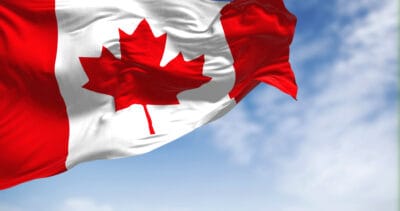Canadians planning for retirement can use their Tax-Free Savings Account (TFSA) to build portfolios of investments to generate streams of passive income that won’t bump you into a higher tax bracket or put Old Age Security (OAS) payments at risk of a clawback.
TFSA or RRSP?
The Canadian government launched the TFSA in 2009 to give people another option for saving funds to meet financial goals. Until that time, most people used their Registered Retirement Savings Plan (RRSP) to build a personal retirement portfolio to go along with work pensions, Canada Pension Plan (CPP), and OAS.
The RRSP is still a valuable option for savers, particularly when they find themselves in a high marginal tax bracket. RRSP contributions can be used to reduce taxable income for the relevant tax year. With a bit of careful planning, the idea is to withdraw RRSP funds in retirement when your marginal tax bracket is much lower. Money removed from the RRSP is taxed as income.
Investors who are in the early years of their careers and expect to have much higher income down the road might decide to save RRSP contribution space for later to maximize the benefit of the tax reduction. Instead, investments can be made inside a TFSA.
The TFSA offers good flexibility for people who might need to tap the savings. Funds can be pulled out at any time and the full amount of the money removed during the year opens up equivalent new contribution space in the following calendar year. RRSP withdrawals, in contrast, are subject to a withholding tax and you don’t get the contribution space back if you need to pull the money for an emergency.
TFSA contributions are made with after-tax funds, but any interest, dividends, or capital gains that are generated inside the TFSA can be removed tax-free, so the full amount can go right into your pocket.
OAS clawback
People who expect to receive a good company pension, CPP, and OAS in retirement have to be careful not to let their RRSP portfolio get too big. The government requires retirees to shift RRSP savings into a Registered Retirement Income Fund (RRIF) by December 31 of the year they turn 71. After that time, a minimum amount has to be taken out every year. This is taxable income, just like income received from CPP, OAS, and a company pension, so a person could potentially find themselves at a higher marginal tax bracket in retirement than when they made the initial RRSP contributions while they were working.
In addition, the Canada Revenue Agency (CRA) implements a 15% OAS pension recovery tax on every dollar of net world income that is above a minimum threshold. The number to watch in the 2024 tax year is $90,997. So, a person who receives OAS and has net world income of $100,997 this year would see their OAS reduced by a total of $1,500 for the July 2025 to June 2026 payment period.
Passive income coming from a TFSA is not counted by the CRA towards the net world income total.
Good TFSA investments for passive income
The TFSA limit is $7,000 in 2024, bringing the cumulative maximum TFSA contribution room per person to $95,000.
People who want zero risk can simply put the money in Guaranteed Investment Certificates (GICs) from issuers that are Canadian Deposit Insurance Corporation members. There is a $100,000 limit per issuer, but it is easy to spread savings out to make sure your funds are safe. GIC rates have pulled back from the highs reached late last year but are still attractive.
Owning stocks comes with capital risk, but returns can be higher. Top dividend-growth stocks sold off over the past two years and currently offer good yields. TC Energy (TSX:TRP), for example, has increased its dividend annually for more than 20 consecutive years and expects to provide ongoing yearly increases of 3-5%, supported by its capital program.
The stock trades near $52.50 at the time of writing compared to more than $70 in 2022. Investors who buy at the current level can get a 7.3% dividend yield.
The bottom line on top TFSA passive income
Investors can quite easily put together a diversified portfolio of high-yield dividend stocks and non-cashable GICs that would provide an average yield of at least 5% today. On a TFSA of $95,000, this would generate $4,750 in annual tax-free passive income that won’t put OAS at risk of a clawback or bump you into a higher marginal tax bracket.







